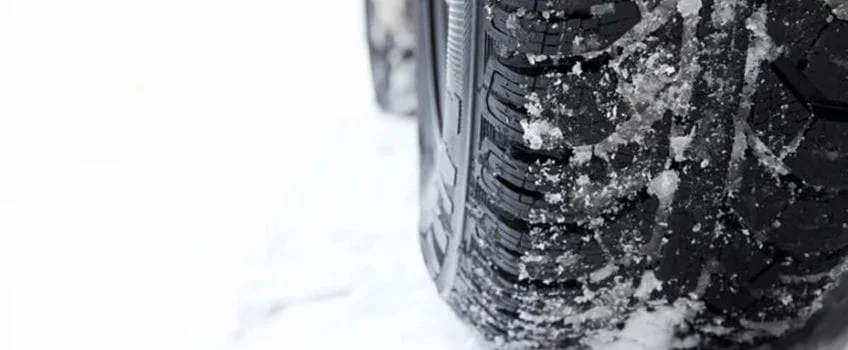
Winter Safety and Driving Tips
Winter safety; driving in the UK can be challenging even for the more experienced drivers as anything can happen, especially in snowy or icy conditions. Whether you drive to and from work, school runs or out and about over the weekend, you need to be well-prepared.
Breakdowns happen more often in winter which means regular car maintenance and vigilance on the road become increasingly important. Adapting your driving style to the weather conditions is essential to ensure the safety of you and your children. No matter how well you can drive or how well-equipped your car is, be careful on the road.
While the UK doesn’t have Siberian winters, conditions can get pretty bad including rain, snow, wind, flooding and overall poor visibility. Besides preparing your car, you also need to know how to handle yourself. Follow these winter driving safety tips for added peace of mind.
How To Drive Safely In Winter
Always plan your route and avoid areas susceptible to bad weather like low-lying roads. Before setting off, look at online maps or find a traffic report to determine the best and safest route. Keeping your eyes on the road is more than focusing on the bonnet. You should look as far ahead as you can and then work your way back to the front of your car. This also applies to cornering as it allows you to determine optimal speed and how to steer far in advance.
You should never speed but especially not when driving in winter weather. The usual following distances still apply but the two-second rule is doubled when wet and up to ten times more in snowy and icy conditions. It’s not just grip and handling, fog and heavy rain can also seriously impact visibility. Always match speed to your visibility which means the less you can see, the slower you should drive.
Controlling speed is one thing, you also need to drive smoothly as there are several factors that can affect stability. This includes applying too much power, slamming on brakes, cornering too fast or steering erratically. Staying in control on a wintery road means smooth gear changes, controlled acceleration and steering. If you look ahead properly and drive carefully, you should be able to spot and avoid any obstacles or dangerous situations.
Before setting off, allow extra time especially for winter journeys. Try and get up at least 10 minutes earlier than usual to give you enough time to de-ice the car. Check the fuel level and ensure that you always have at least a quarter of a tank in case there any unexpected weather delays.
Essential Safety Tips
- Make sure to clear all the windows using a scraper and de-icer
- A neat trick is using a cigarette lighter to warm a key for a frozen lock
- Wear comfortable, dry shoes suitable for driving
- Keep a safe driving distance and NEVER tailgate
- When going uphill, leave extra space in front or simply wait until it’s clear so you don’t have to stop halfway up
- Slow down before going downhill and use a low gear instead of braking. Leave as much driving distance between you and the car in front
- If you have to use your brakes, just apply them gently to avoid wheel locking and skidding
- In snowy conditions, pull away in second gear and ease your foot off the clutch to avoid wheel-spin
- Some automatic cars have a winter mode or they recommend selecting ‘2’ when driving in slippery conditions. It’s best to consult the vehicle owner’s manual to be sure
- If you do stuck in snow, straighten the steering wheel and clear the snow from the wheels. Place a sack or an old rug in front of the driving wheels to give the tyres extra grip
Preparing Your Car For Winter Driving
Take some time out and check your car inside and out to make sure everything is in working order. Those few minutes that a car safety check takes could make all the difference and includes antifreeze levels, battery charge and tyre quality among others.
Check the battery and electronics
The importance of a car battery is often forgotten as it does all the hard work behind the scenes. Most of us don’t even realise how much they actually do until the car won’t start. In winter, it only gets worse as cold weather puts additional strain on the 12V car battery. If you haven’t changed your car battery for some time and your car struggles to start, perhaps it’s time to have it checked before something really goes wrong.
When driving in winter, you need to make sure that everything works especially the lights, wipers and heater. Your car battery supplies power to all the electronics and if any of these are faulty in any way, you could be in serious trouble.
Check the electronics and battery charge regularly and remember to turn off any electrical loads before trying to start the engine. This includes lights, radio, heated rear window and wipers. Only use the starter in short five-second bursts and if the engine doesn’t start immediately, wait 30 seconds between attempts.
Check Antifreeze, Brake Fluid, Engine Oil and Windscreen Washer
While checking car fluids is important in normal conditions, it is non-negotiable for winter driving. Except for the windscreen washer, remember to check fluids when the engine is cold to get a much more accurate reading.
- Use a tester to check the freezing point of the antifreeze
- A recommended oil change is around every 3000-5000 miles. Check the oil at least once a month and change it if it’s dark brown
- Unless your brakes are faulty, brake fluid seldom needs refilling but check the level often especially if there any anomalies while braking
- Top up your windscreen washer with Screen Wash as it has a lower freezing temperature than water which helps prevent the jets from clogging up
Tyre Safety Check
Check your tyres regularly in winter as any defect could have devastating consequences on wet, icy or snowy roads. Driving more frequently in wet weather means that the normal road debris also gets wet and can easily cause punctures. The deeper your tyre tread, the less likely are to get a puncture.
When tread depth is below 3mm there is a noticeable decrease in wet weather performance so consider changing them before reaching the minimum tread depth of 1.6mm. If your tyres need replacing, winter is the perfect time to do it. If you’re not replacing all four tyres, the general consensus is to fit new tyres on the back. Consult your handbook to confirm but it is usually the case whether your car is front-wheel or rear-wheel drive.
If you drive regularly in winter, you should consider fitting winter tyres or all-season tyres. These are made from a special rubber that offers improved grip and handling in wet conditions. Book a free tyre check at Elite Garages and enquire about our wide selection of top quality tyres.
We aim to keep our customers well-informed about car maintenance, tyre advice and easy-to-follow driving tips. Everything we do is to help keep you and your family safe. Whether you’re a student, a single mom, business owner or retiree, our friendly family-run business offers incredible value for all your motoring needs.
Get in touch for more information on how we can help you and please join us on Facebook to become a valued member of our online community. Don’t forget the ELITE PRICE PROMISE – “If you find a genuine printed cheaper price for the same product which we have in stock, we will meet or beat this price at the time of purchase.”
About Us
Opening Times
Saturday : 8:30–4:00
Sunday : closed
More Information
Contact UsCustomer Information Pack
Check MOT Due Date
Free MOT reminder
Careers



Leave a Comments
You must be logged in to post a comment.